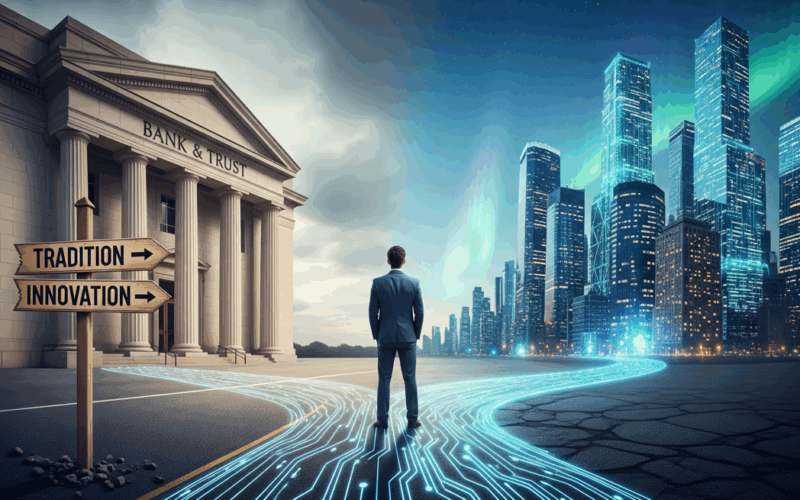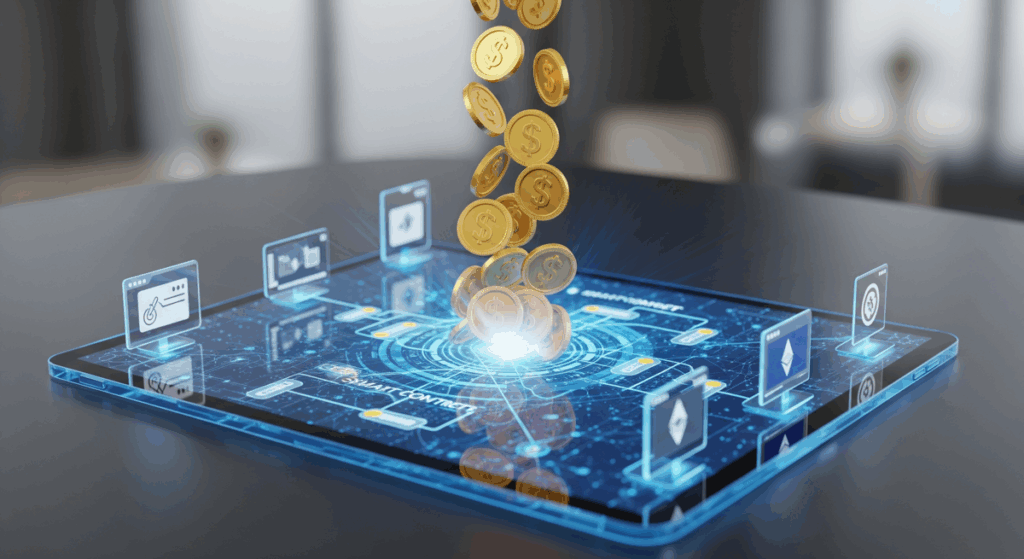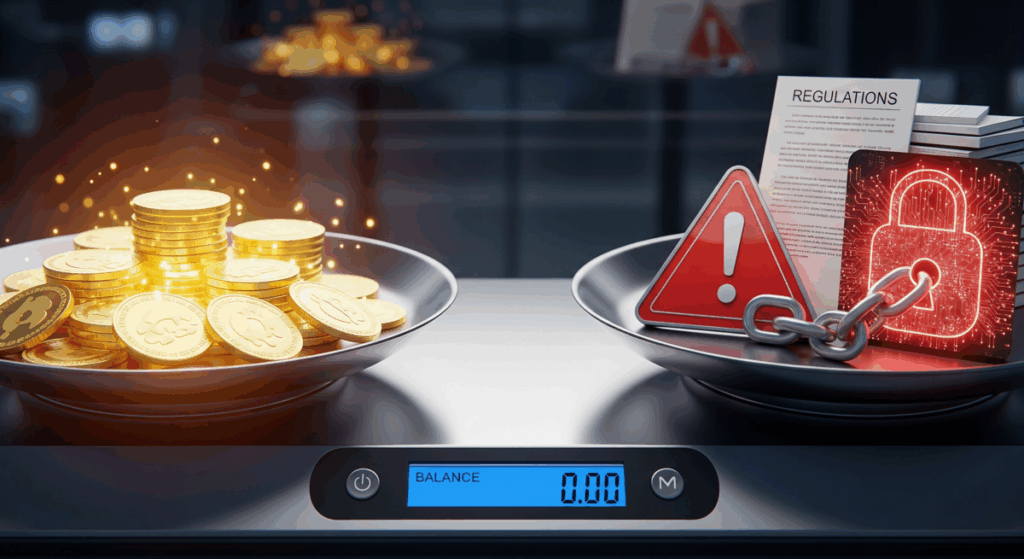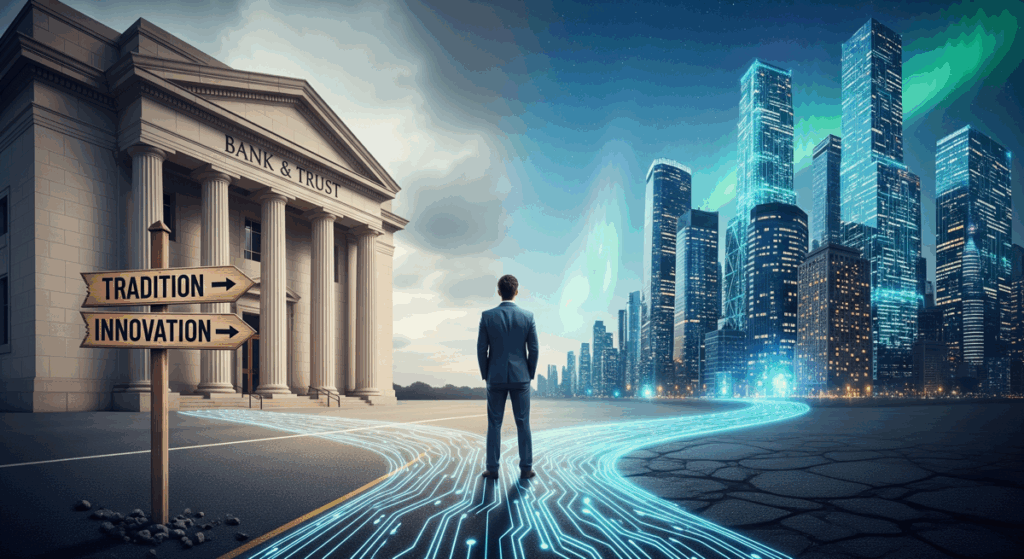The New Way of Investing for Everyone: How RWA Puts Rich People’s Million-Dollar Assets in Your Hands

A financial revolution is quietly underway, and it’s happening at the intersection of traditional markets and blockchain technology. This isn’t about the latest meme coin or a speculative NFT collection; it’s about something far more foundational. It’s about Real World Assets (RWA).
For decades, many of the world’s most valuable assets, from real estate and fine art to stocks and government bonds; have been locked away in a system built on slow, expensive, and opaque processes. But what if you could take a piece of the physical world, digitize it, and put it on a blockchain? That’s the core promise of RWA, and it’s a movement that’s set to fundamentally reshape global finance. For years in crypto space, a lot of trends come and go, but RWA isn’t a flash in the pan. It’s the “super bridge” connecting the old world of finance with the new, and the implications for both institutions and everyday investors are nothing short of transformative.
Institutional momentum, with leaders such as BlackRock and JPMorgan and maturing blockchain infrastructure continue to fuel this trend. As of Q2 2025, the global tokenized RWA market has crossed $25 billion, showing explosive growth. Projections suggest potential expansion to anywhere from $1 trillion to over $18 trillion by 2030 or beyond
What is RWA (Real World Assets)?
At its simplest, RWA tokenization is the process of converting a tangible or intangible asset from the real world into a digital token on a blockchain. Think of it as creating a digital deed or a share certificate that lives on a decentralized ledger. This isn’t just a copy; each token legally represents a claim on the underlying asset.
By converting these assets into digital tokens, RWA delivers increased liquidity, lower investment barriers, clearer transparency, and faster, more cost-efficient transactions.
The range of assets that can be tokenized is vast and growing every day.
- Tangible Assets: These are physical items you can touch. The most popular examples include real estate (residential homes, commercial buildings), commodities (gold, silver), artworks, and even infrastructure projects like green energy charging stations or agricultural farms.
- Intangible Assets: These are non-physical assets with value. This category includes everything from stocks and bonds (like US Treasury bonds) to private equity, funds, corporate accounts receivable, and even novel assets like carbon emission quotas and AI computing power.
The Four-Step Process of RWA Tokenization
For a seemingly complex process, RWA tokenization follows a clear, four-step protocol:
- Asset Verification: The journey begins with a legal and technical verification of the asset’s existence and ownership. This is a critical step that ensures the digital token has a legitimate connection to its real-world counterpart. For a piece of real estate, this means verifying property deeds; for a bond, it means checking the contract.
- Asset Custody: Once verified, the physical asset is placed in the care of a trusted, regulated institution. This could be a law firm, a bank, or a registered company. This custodian holds the physical asset, ensuring it’s secure and its existence is confirmed. This step highlights a key difference from many decentralized projects: RWA isn’t about completely removing trust, but rather about linking on-chain transparency to a trusted, off-chain entity.
- Token Issuance: Next, a smart contract is used to create and issue the digital tokens on a blockchain. The asset can be “fractionalized,” meaning it’s divided into smaller, more affordable units. For instance, a $500,000 house could be split into 5,000 tokens, each worth $100.
- On-chain Management and Trading: Once minted, these tokens can be traded, sold, or used as collateral on the blockchain. This is where the magic of crypto comes in. The tokens can be transferred in minutes, and the ownership history is transparently recorded on the blockchain for everyone to see.
The Game-Changing Benefits of RWA
Why go through all this trouble? The benefits of RWA tokenization are profound, addressing some of the most significant pain points in traditional finance and investing.
- Democratization of Investment: RWA is tearing down the velvet rope of high-end finance. Assets that were once reserved for the ultra-wealthy, think exclusive real estate, private funds, fine art or a stake in a hot startup, are now within reach of the average investor. Fractional ownership allows you to buy a small share of a luxury multimillion-dollar property or an institutional-grade bond with as little as a few dollars, or whatever the token minimum is. This is a massive step towards true financial inclusion.
- Smart contracts ensure fair, traceable distributions, letting ordinary folks invest safely without needing elite connections.
- Faster, Cheaper Deals: Forget waiting for banks to close on weekends. Blockchain runs 24/7, skipping middlemen, which slashes fees and speeds things up.
- Supercharging Liquidity: A house can take months to sell. A private equity stake might be locked up for a decade. These are illiquid assets. By tokenizing them, you create small, tradable units that can be bought and sold instantly on a blockchain, 24/7. This newfound liquidity unlocks trapped capital and makes markets more dynamic and efficient.
- Enhanced Transparency and Efficiency: The blockchain is a shared, immutable ledger. Every transaction and every change in ownership is recorded and publicly visible. This eliminates information asymmetry and reduces the need for expensive, slow intermediaries like lawyers, brokers, and settlement agents. The result? Faster transactions, lower costs, and a much more transparent system.
- A Bridge to the Future: RWA is the essential connector between the old world of traditional finance (TradFi) and the new world of decentralized finance (DeFi). It allows traditional financial institutions to experiment with blockchain technology and leverage its benefits, while also giving crypto-native users a way to convert their virtual gains into stable, value-backed assets with predictable cash flows.
- Stability and Value: Unlike many crypto projects that are highly volatile, RWA tokens are pegged to real-world assets with tangible value and often stable cash flows. This provides a level of stability that makes RWA a compelling option for a wider range of investors looking for assets that can withstand market turbulence.
The Winds of Change: Why RWA is Exploding Now
The concept of RWA has been around for a while, but it’s only in the last few years that it has truly started to take off. This isn’t an accident. A confluence of four major factors has created the perfect storm for RWA’s mainstream adoption.
- Regulatory Clarity: For years, financial institutions were hesitant to enter the crypto space due to a lack of clear rules. That’s changing. Governments are finally on board. The U.S. and other nations are introducing legislation that defines the legal status of digital assets, creating a framework for traditional finance to operate safely. In the U.S., laws like the GENIUS Act have clarified digital asset rules, letting stocks and bonds go blockchain without legal headaches. Europe’s MiCA framework does the same, removing barriers for big players. This regulatory “green light” has removed major legal obstacles and boosted confidence.
- Wall Street’s Embrace: When giants like BlackRock and JPMorgan Chase make a move, the world takes notice. BlackRock, the world’s largest asset manager, launched a tokenized fund (BUIDL) with over $2.4 billion now in TVL on the Ethereum blockchain. JPMorgan has been actively tokenizing U.S. Treasury bonds and dollar deposits via its Onyx platform. And moves by Fidelity and Citigroup have also accelerating the RWA adoption. These aren’t small pilot projects; they are a clear signal that the financial elite see blockchain as a core part of their future infrastructure. This institutional adoption acts as a powerful catalyst for the entire industry.
- Mature Blockchain Technology: The underlying technology has finally caught up with the vision. Mainstream blockchains like Ethereum, Solana, and Polygon have become more secure, scalable, and reliable. Cross-chain technologies, led by networks like Chainlink, have made it possible to securely bring off-chain data onto the blockchain, which is essential for verifying real-world assets.
- Explosive Market Demand: The demand is coming from both sides. Everyday investors are hungry for access to high-quality, stable assets that were once out of reach. At the same time, companies are looking for more efficient, cost-effective ways to manage and transfer assets. RWA delivers a win-win situation for both parties. This mutual need is fueling growth, with the market up 260% in 2025 alone
RWA Impact on Everyday Investors
For regular investors like us, Real World Assets (RWA) are a game-changer, democratizing the world of finance in four key ways. The impact of Real World Assets (RWA) is not just incremental, it’s a paradigm shift that fundamentally redefines what’s possible in investing.
Unlocking Elite Assets
RWA tears down the velvet rope of high-end finance. Assets once reserved for the ultra-rich, like a piece of a U.S. Treasury bond, a luxury home, or a share in a hot pre-IPO company, are now accessible. Through fractional ownership, these assets are digitally divided into small, affordable tokens. This means you can invest with just a few dollars, transforming exclusive opportunities into something for everyone.
Anytime, Anywhere Trading
Forget limited trading hours. RWA operates on a global, 24/7 blockchain network. Whether it’s Tokyo real estate or a European fund, you can trade these tokenized assets from your phone, day or night. This round-the-clock access not only provides immense flexibility but also increases market liquidity, making it easier and faster to buy or sell.
Lower Costs, Big Potential
RWA slashes the costs associated with traditional investing. By using smart contracts, the need for expensive intermediaries like brokers and agents is significantly reduced. This automation makes transactions cheaper and more efficient. Many tokens are even programmed to automatically distribute dividends directly to your digital wallet, ensuring you receive your share of income and asset growth with minimal friction.
True Democratization
At its core, RWA is about financial inclusion. By removing barriers of capital, geography, and time, it empowers a new class of investors. It turns investment from a privilege into an opportunity for the masses, promoting a more equitable distribution of wealth and financial opportunity across society.
RWA Ecosystem and Underlying Blockchains
The ecosystem is booming, with blockchains as the foundation:
- Ethereum: Top pick for security; hosts most projects.
- Solana: Fast and cheap, ideal for stocks.
- Polygon: DeFi-friendly for institutional tests.
- XRP Ledger: Strong for cross-border payments.
New chains tailored for finance are emerging, promising custom solutions.
The RWA Revolution in Action: Key Implementation Areas
RWA isn’t just an idea; it’s being built and deployed today across several key sectors.
Tokenized Treasury Bonds and Funds
This is arguably the most successful RWA category to date, primarily driven by the security and stable yields of U.S. Treasury bonds. Platforms like Ondo Finance enable users to exchange stablecoins for tokenized bonds that earn a competitive yield. The market for these tokenized assets is growing at an incredible pace, and it’s a sign of how the future of finance is likely to evolve.
Real Estate Tokenization
Real estate is a multi-trillion dollar asset class and a perfect candidate for RWA. Platforms like Realty and Balcony are tokenizing properties in cities all over the world, allowing anyone to buy a fraction of an apartment or commercial building. This not only makes real estate investment more accessible but also provides a way for developers to raise capital more efficiently.
Tokenizing Private Equity and Venture Capital
Accessing early-stage investments in private companies has traditionally been a privilege of institutional investors. Now, financial giants like Fidelity and Citigroup are exploring on-chain funds that could allow accredited investors to get a piece of a top-tier private equity fund with a much smaller investment.
New and Niche Assets
The power of RWA extends beyond traditional finance. We’re seeing innovative projects tokenizing everything from green energy assets (using revenue from charging stations as collateral) to agricultural products (a grape farm in China raised funding by tokenizing its data) and even AI computing power. This highlights the vast potential of RWA to unlock value in previously overlooked or illiquid markets.
The Challenges and Risks Ahead
Despite its immense promise, the RWA movement is not without its hurdles.
- Compliance and Regulation: Navigating different regulatory frameworks across countries is a significant challenge. A token that is a “security” in one jurisdiction may be something else entirely in another, creating a complex legal landscape for global liquidity.
- Off-chain Custody Risk: The on-chain data is transparent, but the physical asset still exists in the real world. This introduces the risk of fraud or mismanagement by the off-chain custodian. Building trust and a robust legal framework around these custodians is paramount.
- Market Liquidity: While RWA aims to boost liquidity, the secondary markets for many of these non-standardized assets are still in their infancy. Pricing and trading mechanisms will need to mature as the market grows.
- Technological and Security Risks: As with all blockchain projects, smart contract vulnerabilities, cross-chain issues, and other technical complexities remain a concern.
Global Landscape: A Race to the Top
The RWA revolution is a global phenomenon, with different regions taking unique approaches.
- The United States: The U.S. is a hub of innovation, with major institutions like BlackRock and JPMorgan leading the charge in tokenizing traditional assets.
- Europe: Europe, guided by frameworks like MiCA, is taking a more deliberate, compliance-focused path, with a focus on tokenizing bonds, real estate, and carbon credits.
- Asia: Asia, particularly Singapore, Hong Kong, and the UAE (Dubai, Abu Dhabi), is rapidly emerging as a leader in RWA. They are actively building digital asset infrastructure and piloting innovative projects, aiming to become global RWA trading centers. In mainland China, the focus is more on policy-driven digital-real integration, with unique scenarios like tokenizing cultural tourism tickets and AI computing power.
My Final Take on RWA: This is Your Opportunity
RWA is not a trend; it’s a foundational financial infrastructure being built right before our eyes. It represents a paradigm shift from a world of closed, inefficient financial systems to an open, transparent, and globally accessible one. The vision is to make global assets flow more rapidly, be more easily obtained, and be more equally distributed. This is the true spirit of blockchain.
For the savvy investor, this is a moment to pay attention to RWA. The opportunity lies in identifying the high-quality projects and companies that are building the infrastructure for this new era. While the journey will have its risks, the potential rewards are immense. Remember the old saying: “When everyone understands it, the opportunity is gone.”








Pingback: Understand More on Real World Assets (RWA)
Pingback: RWA Impact on Ordinary Investors
Pingback: The Payment Giant’s Bold Pivot: SWIFT Shocking Move Into the Blockchain World